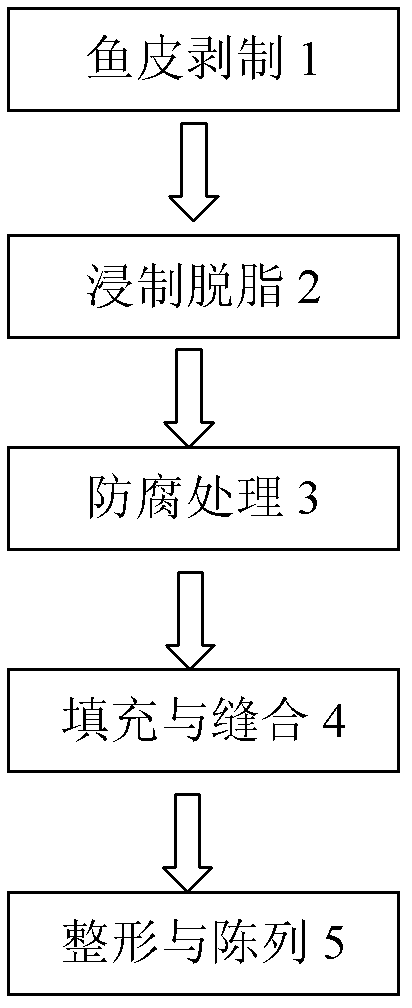Harmless fabrication method of sturgeon taxidermy specimen
A production method and harmless technology, which can be used in the preservation, application, animal husbandry and other directions of human or animal bodies, can solve problems such as environmental or human toxicity, and achieve the effect of preventing specimens from growing mold and insects.
- Summary
- Abstract
- Description
- Claims
- Application Information
AI Technical Summary
Problems solved by technology
Method used
Image
Examples
Embodiment Construction
[0017] A harmless method for preparing a sturgeon specimen, the specific steps are as follows:
[0018] A. Fish skin peeling 1: Put the fish body (dead or natural death) specimens on the operating table with the abdomen facing upwards, cut them open along the midline of the abdomen from the pelvic fin to the anus, remove internal organs, muscles, cartilage and other tissues, cut the head along the midline of the lower end of the snout, and remove the gills , eye, brain tissue and connective tissue to maintain the integrity of the head and body skin.
[0019] Soak Skim 2 : Pave 3 or 4 layers of waterproof rain cloth in a large aquarium, and the area of the rain cloth should be enough to wrap the specimen. Carefully move the peeled fish skin and its head in, make the specimen lie on its back and naturally curl up in the container, pour high-concentration alcohol (ethanol content 95 or 96 or 97 or 98 or 99.9%) until it completely submerges the specimen, and place it in th...
PUM
 Login to View More
Login to View More Abstract
Description
Claims
Application Information
 Login to View More
Login to View More - R&D
- Intellectual Property
- Life Sciences
- Materials
- Tech Scout
- Unparalleled Data Quality
- Higher Quality Content
- 60% Fewer Hallucinations
Browse by: Latest US Patents, China's latest patents, Technical Efficacy Thesaurus, Application Domain, Technology Topic, Popular Technical Reports.
© 2025 PatSnap. All rights reserved.Legal|Privacy policy|Modern Slavery Act Transparency Statement|Sitemap|About US| Contact US: help@patsnap.com

